[caption id="attachment_1003735249" align="aligncenter" width="550"]
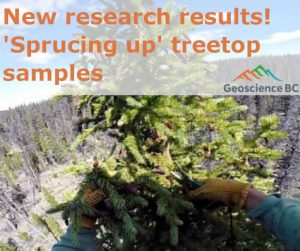 Halogen element analysis poster Credit: Geoscience BC
Halogen element analysis poster Credit: Geoscience BC[/caption]
VANCOUVER - New developments in a technique testing for halogen elements in samples taken from treetops suggest potential uses in mineral exploration activities in central B.C.
A new report from
Geoscience BC looks at determining concentrations of the halogen elements, such as fluorine, chlorine, bromine and iodine, in spruce top needles to see if they contain signals of mineral deposits or changes in geology below the surface.
The project used existing spruce treetop samples taken during Geoscience BC’s TREK regional biogeochemical survey in 2015. About 400 spruce treetops were sampled over an area of 1,000 sq. km approximately 120 km southwest of Vanderhoof.
“Our results show that modeling the concentrations of halogen elements in the spruce samples may identify important structures related to potential mineralization that are invisible from the surface,” researchers Colin Dunn and Dave Heberlein said in a release.
Typically, halogen elements are strongly enriched in alteration and gangue minerals associated with mineral deposits. Over time, these halogens move out of their hosts and migrate into the earth where they accumulate in soils, waters and vegetation. Mapping the distribution of these elements in accessible surface settings may therefore help detect underlying areas of mineralization by combining the biogeochemical results with geological knowledge of an area.
The new report titled “A Geochemical Investigation of Halogens in Spruce Treetops and Integration with Existing Multi-Element Data – Blackwater/TREK Regions, Central British Columbia” is the latest in a series minerals research projects from the organization examining how geochemical signals in surface materials can focus the search for buried mineralization in central B.C.
“This project extracts even more value from the samples we collected on the TREK project in 2015 and will provide mineral explorers with a new tool to help identify new targets and explore more efficiently,” added Christa Pellett, Geoscience BC’s VP of minerals.
Geoscience BC generates independent, public geoscience research and data about British Columbia’s minerals, energy and water resources. Geoscience BC is a not for profit society incorporated under the B.C. Societies Act.
For more information, visit
www.GeoScienceBC.com.
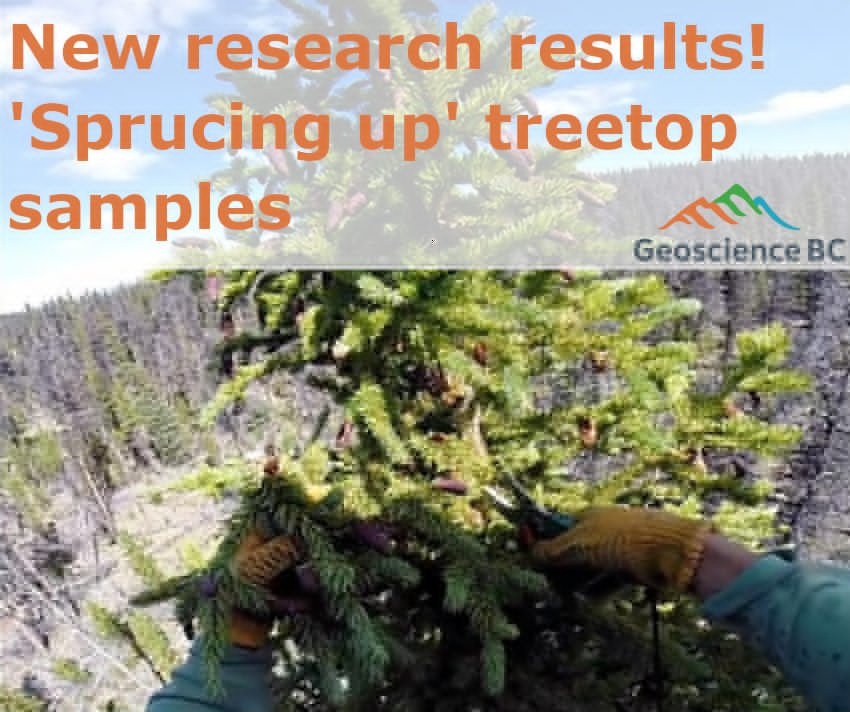
 Halogen element analysis poster Credit: Geoscience BC[/caption]
VANCOUVER - New developments in a technique testing for halogen elements in samples taken from treetops suggest potential uses in mineral exploration activities in central B.C.
A new report from Geoscience BC looks at determining concentrations of the halogen elements, such as fluorine, chlorine, bromine and iodine, in spruce top needles to see if they contain signals of mineral deposits or changes in geology below the surface.
The project used existing spruce treetop samples taken during Geoscience BC’s TREK regional biogeochemical survey in 2015. About 400 spruce treetops were sampled over an area of 1,000 sq. km approximately 120 km southwest of Vanderhoof.
“Our results show that modeling the concentrations of halogen elements in the spruce samples may identify important structures related to potential mineralization that are invisible from the surface,” researchers Colin Dunn and Dave Heberlein said in a release.
Typically, halogen elements are strongly enriched in alteration and gangue minerals associated with mineral deposits. Over time, these halogens move out of their hosts and migrate into the earth where they accumulate in soils, waters and vegetation. Mapping the distribution of these elements in accessible surface settings may therefore help detect underlying areas of mineralization by combining the biogeochemical results with geological knowledge of an area.
The new report titled “A Geochemical Investigation of Halogens in Spruce Treetops and Integration with Existing Multi-Element Data – Blackwater/TREK Regions, Central British Columbia” is the latest in a series minerals research projects from the organization examining how geochemical signals in surface materials can focus the search for buried mineralization in central B.C.
“This project extracts even more value from the samples we collected on the TREK project in 2015 and will provide mineral explorers with a new tool to help identify new targets and explore more efficiently,” added Christa Pellett, Geoscience BC’s VP of minerals.
Geoscience BC generates independent, public geoscience research and data about British Columbia’s minerals, energy and water resources. Geoscience BC is a not for profit society incorporated under the B.C. Societies Act.
For more information, visit
Halogen element analysis poster Credit: Geoscience BC[/caption]
VANCOUVER - New developments in a technique testing for halogen elements in samples taken from treetops suggest potential uses in mineral exploration activities in central B.C.
A new report from Geoscience BC looks at determining concentrations of the halogen elements, such as fluorine, chlorine, bromine and iodine, in spruce top needles to see if they contain signals of mineral deposits or changes in geology below the surface.
The project used existing spruce treetop samples taken during Geoscience BC’s TREK regional biogeochemical survey in 2015. About 400 spruce treetops were sampled over an area of 1,000 sq. km approximately 120 km southwest of Vanderhoof.
“Our results show that modeling the concentrations of halogen elements in the spruce samples may identify important structures related to potential mineralization that are invisible from the surface,” researchers Colin Dunn and Dave Heberlein said in a release.
Typically, halogen elements are strongly enriched in alteration and gangue minerals associated with mineral deposits. Over time, these halogens move out of their hosts and migrate into the earth where they accumulate in soils, waters and vegetation. Mapping the distribution of these elements in accessible surface settings may therefore help detect underlying areas of mineralization by combining the biogeochemical results with geological knowledge of an area.
The new report titled “A Geochemical Investigation of Halogens in Spruce Treetops and Integration with Existing Multi-Element Data – Blackwater/TREK Regions, Central British Columbia” is the latest in a series minerals research projects from the organization examining how geochemical signals in surface materials can focus the search for buried mineralization in central B.C.
“This project extracts even more value from the samples we collected on the TREK project in 2015 and will provide mineral explorers with a new tool to help identify new targets and explore more efficiently,” added Christa Pellett, Geoscience BC’s VP of minerals.
Geoscience BC generates independent, public geoscience research and data about British Columbia’s minerals, energy and water resources. Geoscience BC is a not for profit society incorporated under the B.C. Societies Act.
For more information, visit 
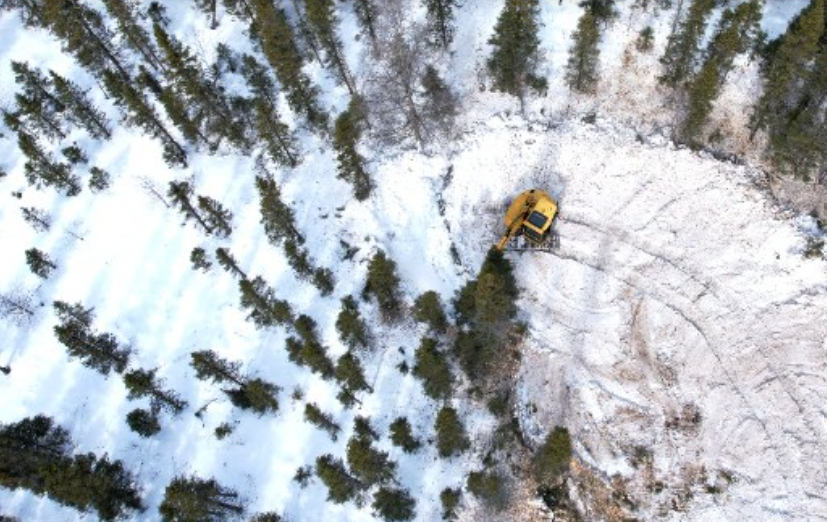
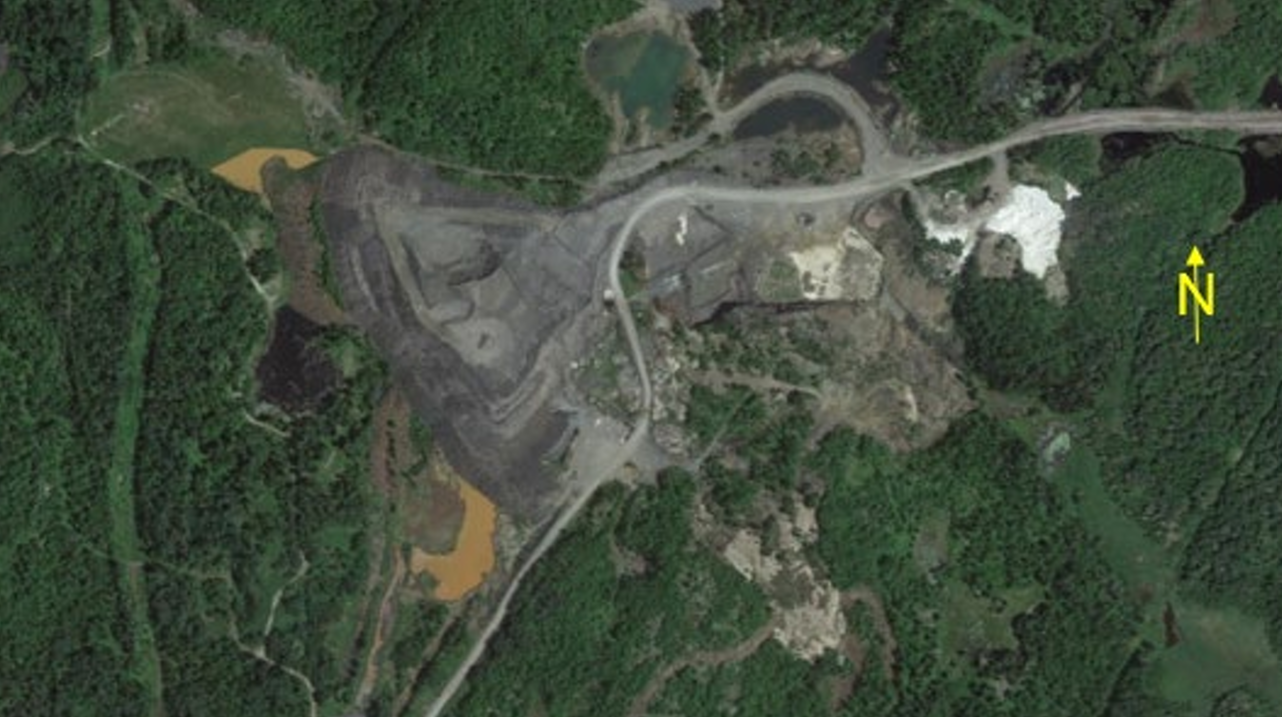
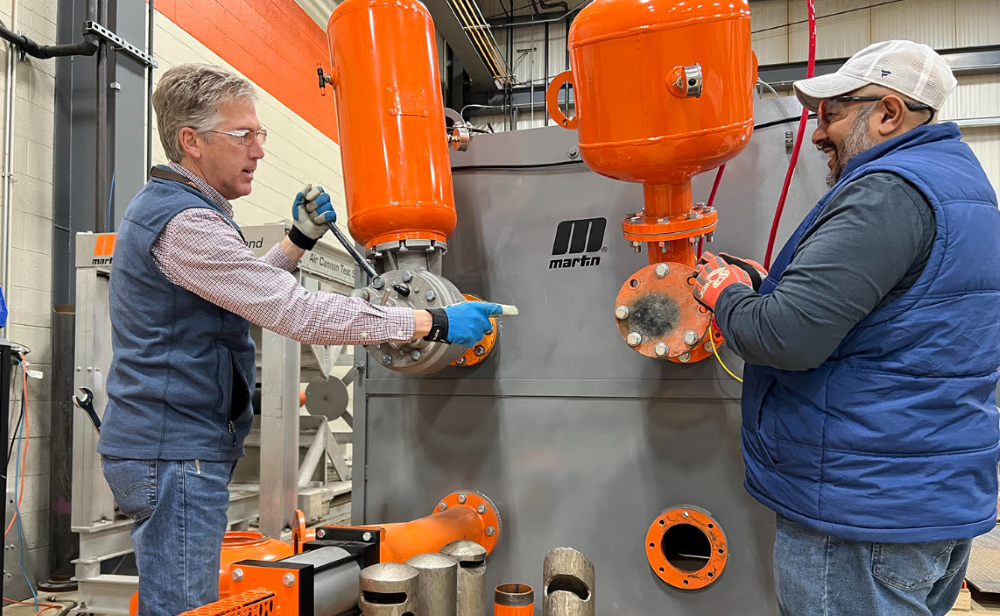
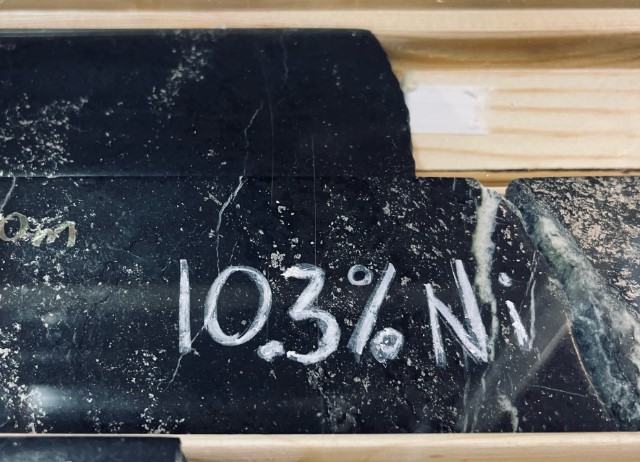
Comments